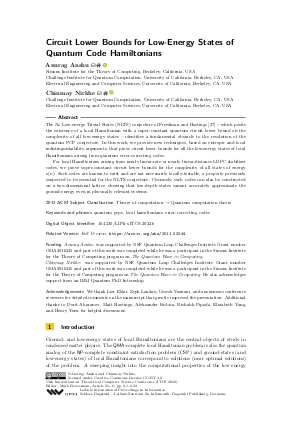LIPIcs.ITCS.2022.6.pdf
- Filesize: 0.84 MB
- 22 pages

 Creative Commons Attribution 4.0 International license
Creative Commons Attribution 4.0 International license










Feedback for Dagstuhl Publishing